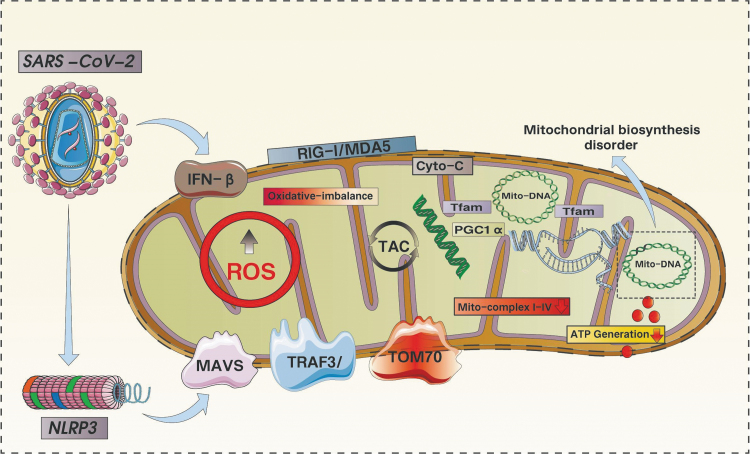FIG. 2.
SARS-CoV-2-mediated ROS burst-induced mitochondrial oxidative stress damages good inflammatory responses in a vicious cycle in mitochondria. SARS-CoV-2 attack can lead to the activation of NLRP3 inflammasome and the excessive production of ROS. Mitochondria are the main site of ROS generation and the main target of ROS attack. Dysfunction, the level of oxidative phosphorylation was significantly reduced. At the same time, the reduced levels of PGC1a and Tfam also led to mtDNA dysfunction, severe mitochondrial biosynthesis was blocked, and the level of ATP synthesis was significantly reduced. Activation of the NLRP3 inflammasome also leads to dysfunction of MAVS/TRAF3 and TOM70, which ultimately leads to damage to the inner and outer mitochondrial membranes, further mediating the release of Cyto-C into the cytoplasm and activating apoptosis via the caspase pathway. ATP, adenosine triphosphate; MAVS, mitochondria antiviral signaling.

